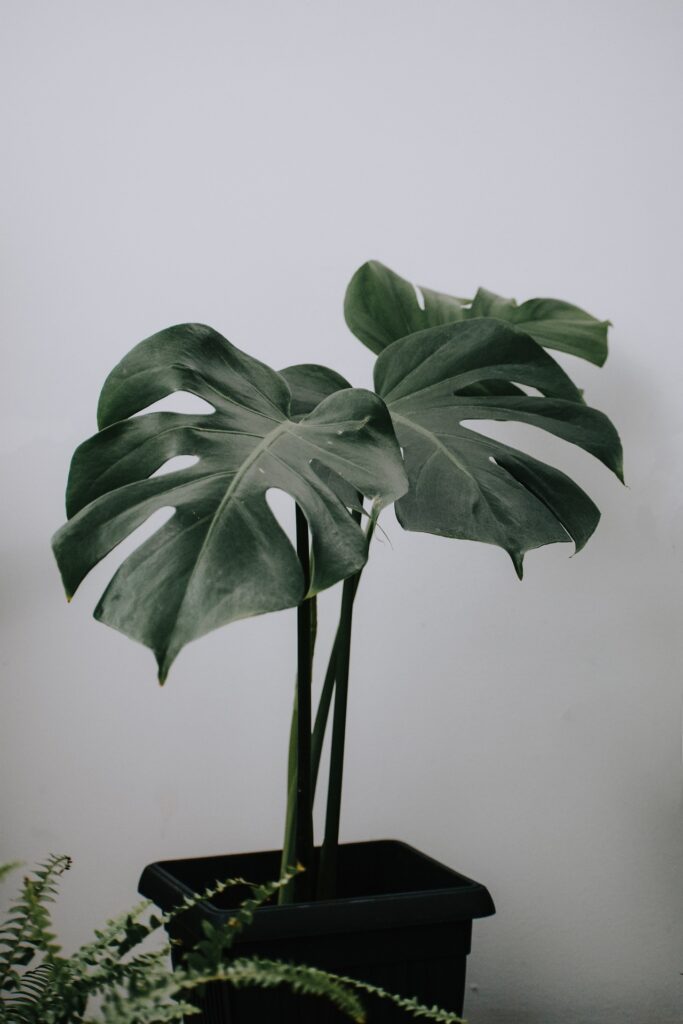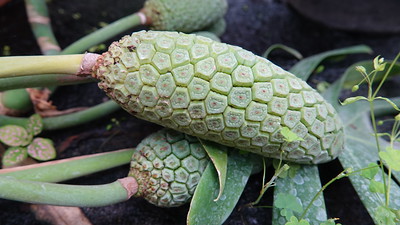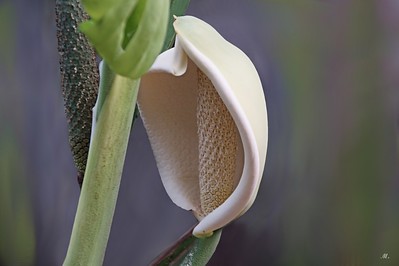Monstera deliciosa: How to plant and care
Monstera deliciosa is a plant that we all have either seen or heard of. But do we know this plant as Monstera deliciosa or something else? Let’s read about this plant and why it is so popular all around.
Monstera deliciosa is an indoor houseplant popular for its large, dark green, and glossy leaves. Monstera deliciosa means delicious monster which refers to a fruit that tastes delicious yet with potential dangers. And the plant is famously known as the “Swiss Cheese Plant”. Yes! You heard it right. The famous Swiss cheese plant. This plant in Chinese culture symbolizes a long life, wisdom, and respect for the elders.
The quirky leaves of the plant have beautiful deep splits and holes that make the plant, one of the most preferred house plants for plant lovers. Monstera deliciosa or the Swiss cheese plant is native to Southern Mexico, South of Panama.
The plant is perennial in nature and is a member of the Araceae family. Monstera deliciosa initially appears as a terrestrial plant till it comes in contact with a hardy tree. In its natural habitat, the plant can grow up to 70 feet, if supported by a sturdy tree.

Is the Monstera deliciosa plant poisonous?
The Monstera or Swiss cheese plant is poisonous in nature. Every part of the plant is poisonous except the fruit when it completely ripens. Although the severity of the poison is low it still leads to various complications if ingested. It includes- contact dermatitis, vomiting, nausea, burning of mouth and tongue, diarrhea, excessive drooling, etc. due to the presence of calcium oxalate crystals.
Soil and Climatic conditions
Soil
The best-suited soil for the Swiss cheese plant is loamy soil with high organic matter and good drainage. The soil pH should preferably be 6-8.
Temperature
Monstera deliciosa is a tropical plant that requires a tropical, and humid climate. It prefers partial sunlight and direct sunlight for 2-5 hours.
See Also: Mallow flower: A complete overview
Important parts of the Swiss Cheese plant
Fruit of Monstera deliciosa
The fruits of the plants are edible when ripened. Otherwise, the unripe fruits are poisonous when consumed. The color of the fruit is usually green, green, and cream in color. The fruit is a type of berry that is covered with green hexagonal scales. The hexagonal scales fall off naturally when the fruit matures. The fruit tastes like banana and pineapple. Swiss cheese plants do not produce fruit as houseplants.
Flower of Monstera deliciosa
The flowers are green and creamy white in color. And the inflorescence of the flower is spadix type. The plants do not produce flowers as houseplants.
Leaf
The leaves are large in size, dark green in color, and glossy to feel. Leaves are ovulated, heart-shaped with deep splits and several holes (only mature leaves have holes). The arrangement of leaves is alternate.
Aerial roots of Monstera deliciosa
Aerial roots are basically the modifications of roots that have various functions to perform for the plant. They come out of the stems on the sides and as the plant gets taller, the more the aerial roots develop. The roots are green and tender when young but as the plant gets mature they become brown but firm.
The aerial roots help the plant to attach to trees for support and to get as much sunlight as they require. They simply support the plant as it climbs trees in the forests. Not just this but the aerial roots are said to absorb nutrients from the surroundings, not as much as underground roots but a little less.
Seeds of Monstera
The seeds of the plant are present inside the fruit enclosed by hexagonal berries. Usually, the seeds are pale green or white in color. The size of the seed is smaller than a pea and not every berry contains seeds during their harvesting.
Benefits of Monstera deliciosa
Air-purifying
Like most indoor plants, the Swiss cheese plant is an air-purifying plant. The plant removes the toxins from the air and provides clean air to breathe in.
Nutrient-rich fruit
The fruit of the plant is rich in Vitamin C, Vitamin D, protein, fiber, and calcium with zero fat.
Ornamental value
The plant has high ornamental value in the market. Its big green, glossy and quirky leaves with splits makes the plant a classic piece for decorating houses, offices, and stores by adding a touch of life and beauty to the place.
Medicinal value
Apart from the plant’s aesthetic uses, it has also been used for years for its medicinal value. The plant roots are known to be used as a remedy for snakebites.
Stress relieving
The presence of the plant near you can reduce physical stress, improves blood pressure, and increase heart rate.
Therapeutic properties
The plant is also known for its ‘Therapeutic’ properties that reduce stress, anxiety, and depression in people.
Improves quality of sleep
It improves sleeping patterns when kept in the bedroom as it cleans, humidifies the air, and helps get quality sleep.
Sound Absorption
The plant has big leaves that absorb sound vibrations and noise.
Variegated Monstera plant
The variegated variety of monstera plants such as Monstera Thai Constellation is a beautiful variety of Monstera deliciosa that is one of the most expensive varieties and has high demand in the market.
Methods of Propagation of Monstera deliciosa plant
The most common methods of propagation of the plant are- Stem cutting and Air layering.
Stem cutting in swiss cheese plant
This method of propagation of Monstera deliciosa is simple and the simplest to perform. It may take a year to produce another plant through this method. For successful propagation make sure to choose the ideal time to propagate. In active growing seasons, the summer is best for the propagation of the plant. Follow the steps to propagate through this method-
- Select the stem that is just after the leaf node. The ideal length should preferably be 5-7 inches. Always make sure that the stem is healthy, disease free, long, and with, at least 2-3 leaves and a leaf node.
- Cut the stem and place it in either water or soil directly for the roots to develop. Make sure to place the stem in an upright position to get the plant to stand straight upwards.
- For the early emergence of roots, you could use rooting hormones (It is a mix of ingredients either in liquid, powder, or gel form that enhances the development of the root system to the applied area of the stem) to speed up the process of root development in the stem. Especially if you intend to plant the stem directly into the soil, the use of rooting hormone will fasten up the process of root development. But in general, this step is not necessary and you can skip the step in case you prefer to place the stem in water or even in the soil directly.
- Check for root development from time to time carefully lifting the stem.
- If you see root initiation in your stem then you can transplant your cutting.
Air Layering in Monstera deliciosa
For Air layering, chose a healthy, long, and disease-free stem.
- Target the area of the stem where an aerial root and leaf axil is located.
- Wrap the area with some damp sphagnum moss around it and wrap it with plastic and secure it with twisty ties.
- Every few days remoisten the moss using a spray bottle. In a couple of months, you will see roots in that area.
- When you see large roots developing, cut the stem near the part where the incision was.
- Further, plant the stem in a pot.
Potting the stems after propagation
1) Take a 6-8 inches pot and add about 3-5 inches of the peat-based potting mixture in the bottom of the pot.
Note– The potting mix for Monstera includes- humus-rich soil, organic matter, peat moss, pine bark, and one part of perlite or vermiculite.
2) Now place the stem into the pot, not too deep in an upright position, and cover it up with soil mix, leaving about 1-inch space at the top of the pot to avoid soil spilling.
Major Pest and Diseases of the Monstera plant
The plant is prone to many pests and diseases. Common diseases that affect the monstera plants are Bacterial leaf-spot diseases, rust, Anthracnose, root rot, powdery mildew, and mosaic virus.
Stem and root rot of Monstera deliciosa
The disease may lead to the death of the plant. The stem and root rot of Monstera is caused by fungus or bacterial attacks in the plant root. That further causes stem and root rot. The sign of the disease includes yellowing Monstera leaves, wilting, and at last death.
Bacterial leaf spot in Monstera deliciosa
The disease is caused by bacteria. The bacteria penetrate into the leaves through wounds or natural openings leading to the breakdown of tissues. And this results in Monstera brown spots on the leaves that eventually lead to death.
Anthracnose
This disease is caused by fungus and if not controlled then it could lead to severe damage to the plant. The symptoms of this disease include discoloration of leaves, irregular spots in leaves, and the formation of lesions.
Common pests of the Monstera deliciosa include- thrips, whiteflies, scale, mealybugs, etc. Some of them are explained below-
- Whiteflies- As the name suggests, these are small, white insects that feed on plant sap. As the whiteflies feed on the plant and defecate there. Their defecation attracts several other pests and causes fungal infections.
- Thrips- These are light brown, rice-shaped insects with tiny wings. They feed on the veins of the leaves and due to this, the leaves become discolored.
- Mealybugs- Mealybugs are one of the common pests of indoor plants. These are white and oval-shaped. Waxy-coated insects eat the sap of plants and leading to the plant’s stunted growth.
Control of pests in Monstera deliciosa
To control the disease and pest infestation in monstera plants regularly monitor your plants. Regular spraying of neem oil, pesticides, or insecticides will help control pest infestation. And in case of infestation follow the following methods to control pests.
Physical control
Either manually remove the pest or use traps such as sticky traps, light traps, etc.
Biological control
For the eradication of pests, this method is used. The method involves the killing of insect pests to completely get rid of them. Predators, parasites, and parasitoids are to be used for the biological control method.
Chemical Control
The chemical control of insect pests includes the use of insecticides or pesticides. The types of pesticides on the basis of contact are- Systemic pesticides and contact pesticides.
Conclusion
Monstera, a well know houseplant that has uniquely shaped leaves has become one of the most popular indoor plants over time. The plant has become one of the favorite plants among plant lovers and decorators due to its unusual and unique features. Not just in the present but in the future too this plant will spread its beauty and uniqueness all around the world.


